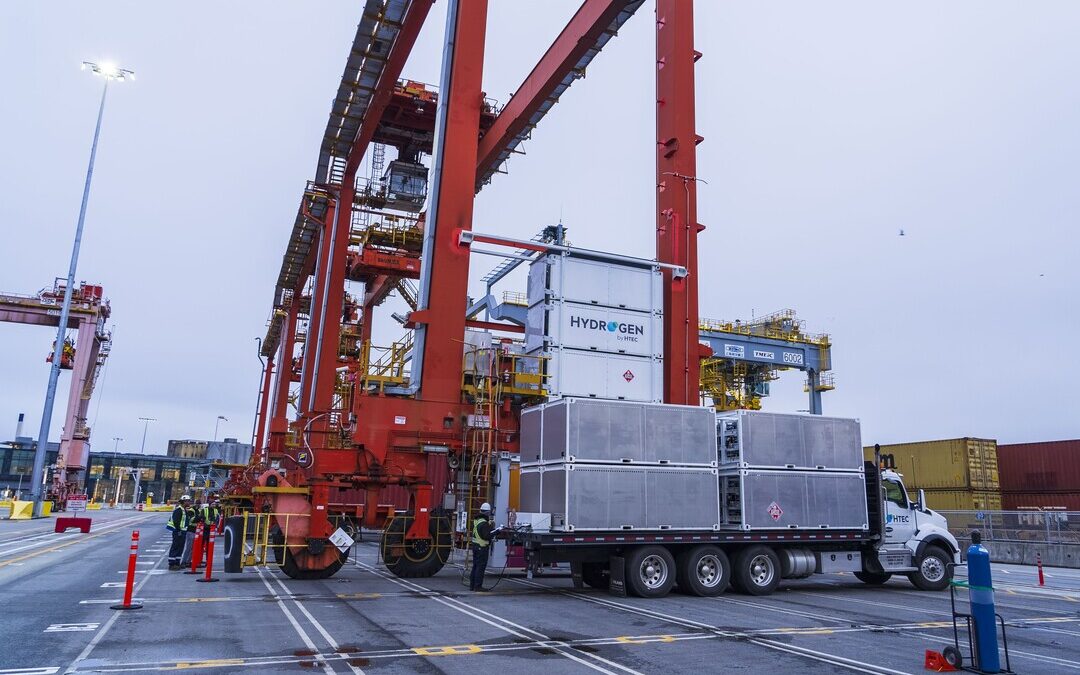DP World Tests Hydrogen-Powered Crane at Vancouver Port to Cut Emissions
The crane can store up to 135 kgs of compressed hydrogen across 15 tanks, feeding a fuel cell system that charges the crane’s electric drive.
Global port operator DP World said on Friday it has completed initial testing of a hydrogen fuel cell-powered crane at the Port of Vancouver, part of its plan to decarbonize operations and transition away from diesel-powered equipment.
The pilot project retrofitted a traditional rubber-tired gantry crane, which is typically powered by diesel, with a hydrogen-electric generator, battery energy storage system, and hydrogen tanks.
The modified crane is undergoing a one-year field trial to evaluate performance, energy consumption, and environmental impact.
RTG cranes are critical for container handling at ports, but contribute significantly to greenhouse gas emissions.
The company said 19 RTG cranes at DP World’s Vancouver terminal consume 50 percent of diesel and generate more than 4,200 tonnes of carbon dioxide annually.
“As one of the world’s foremost port and terminal operators, we are dedicated to advancing sustainable practices that will drive industry-wide change,” Doug Smith, CEO of DP World in Canada, said in a statement.
Hydrogen-powered crane cuts emissions, captures energy
The hydrogen-powered crane can store up to 135 kilograms of compressed hydrogen across 15 tanks, feeding a fuel cell system that charges the crane’s electric drive.
The system also captures regenerative energy when lowering containers, reducing energy demand.
Factory tests showed the crane could operate continuously for 16 hours, lifting and lowering a 40-ton load 105 times, while emitting only steam instead of roughly 400 kilograms of CO₂, according to TYCROP Manufacturing Ltd., which developed the hydrogen-electric system alongside H2 Portable.
HTEC provided the hydrogen storage and supply infrastructure.
DP World plans to retrofit 25 additional diesel-powered RTGs at its Vancouver and Prince Rupert terminals if successful. The company is also planning to trial an electric terminal tractor and acquire a fleet of electric vehicles.
The Port of Vancouver was selected for the pilot because of its strong presence in the hydrogen and fuel cell industry and the support of the Province of British Columbia.

